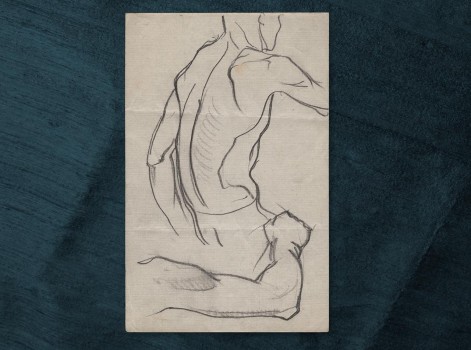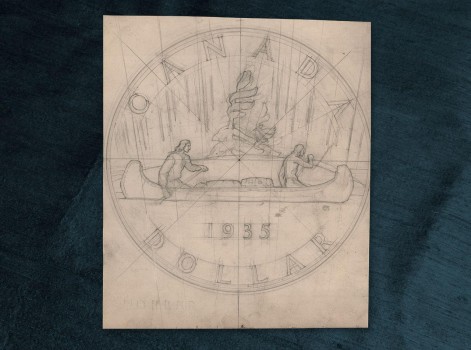Coin designs of Emanuel Hahn
An Emanuel Hahn First World War memorial design in Lindsay, Ontario. (Wikimedia Commons, Richard BH, Hamilton, ON)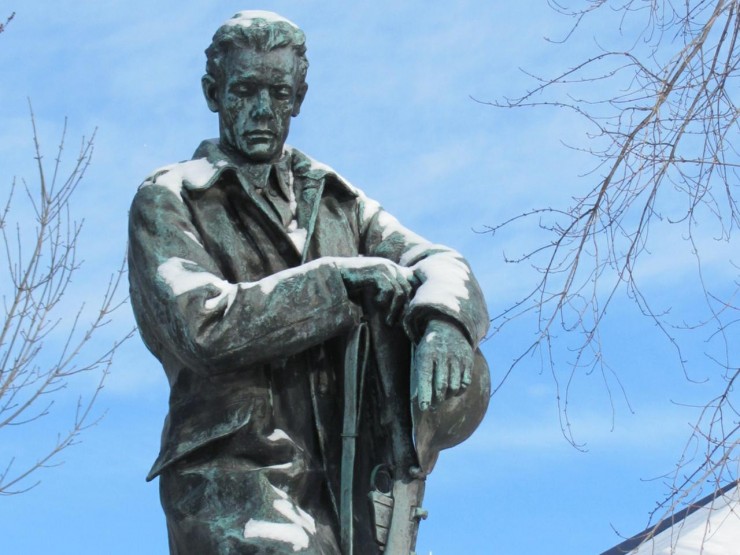
Emanuel Hahn was a celebrated Canadian sculptor whose work can be seen in the monuments of many Canadian cities. Born in Germany in 1881, Hahn immigrated to Canada with his family at the age of 7. Along with medals and a number of significant war memorials, Hahn designed some of Canada’s most distinctive and iconic coins. The voyageur silver dollar, the Bluenose dime, the caribou 25 cent piece and the 1939 silver dollar commemorating the Royal Visit of King George VI and Queen Elizabeth were all Hahn designs.
Pencil drawing by Emanuel Hahn sketching features proposed for the back of the 1935 silver dollar. 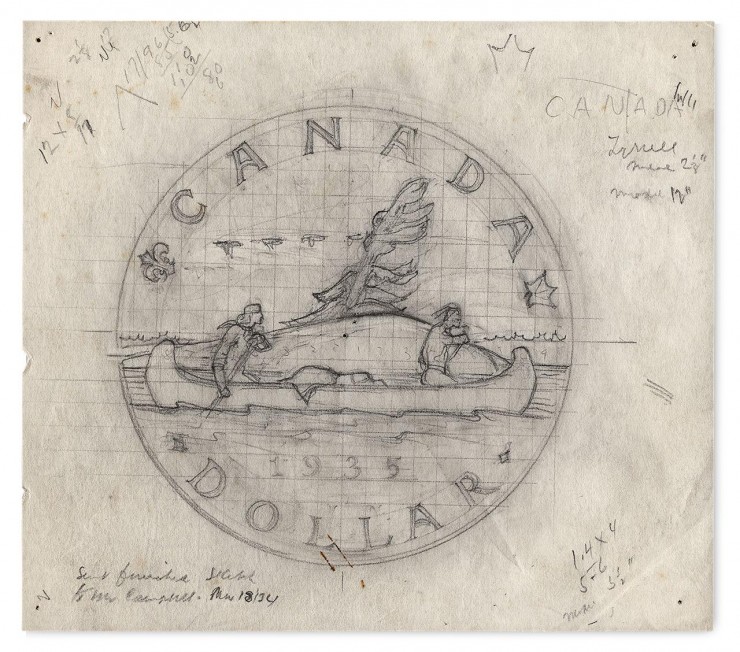
(NCC 1963.059.015.004)
In 1934 the Department of Finance invited Emanuel Hahn to submit a design for a silver dollar commemorating the silver jubilee of the reign of King George V. Hahn corresponded with the Royal Mint in London and the Royal Canadian Mint to gain insight into the process of minting a coin before submitting a drawing depicting a voyageur and a First Nations man paddling a canoe. To ensure accuracy, Hahn studied the designs of traditional canoes and the paintings of Frances Anne Hopkins. Hahn’s design was approved with only a few minor changes and was used as the standard pattern for the Canadian silver dollar until the introduction of the ‘Loonie’ in 1987.
Following the success of the voyageur silver dollar, Hahn was among several artists invited to submit designs for new Canadian coinage to be released in conjunction with the accession of King George VI, in 1937. Hahn produced no less than 16 sketches. His caribou (proposed for both the nickel and the quarter) and his Bluenose were both selected for the new coins. All of the designs put into circulation in 1937 are still to be found on Canada’s circulating coinage today. Hahn left an impressive mark on Canadian currency and all Canadians can be proud to have a ‘Hahn original’ in their pockets.
Reverse of 1935 silver dollar designed by Emanuel Hahn. 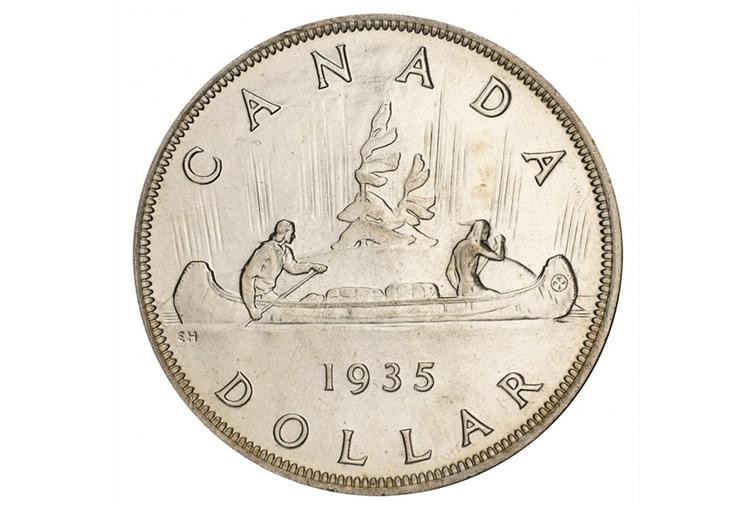
(NCC 1978.058.285b1)
Emanuel Hahn’s legacy of coins, drawings, plaster models and correspondence is preserved in the National Currency Collection of the Bank of Canada.
The Museum Blog
Fur Trade Economics
Over its 350-year lifespan, the Hudson’s Bay Company has had an enormous impact on Canada’s economy and how the nation was settled.
The house the Bank of Canada built
By: Graham Iddon
The Bank of Canada head office is two structures: the stone cube on Wellington Street and the glass structure that it is nestled into. Both are significant architectural landmarks.
Value is in the Eye of the Consumer
By: Graham Iddon
Supply and demand is part of the very bedrock of an economy. It's what generates the price of any product or service.
Mishap on the dollar
By: Graham Iddon
An image of a river of logs floating behind Parliament Hill has long lived in Canadian collective memory thanks to a bank note, the Scenes of Canada $1 bill.
The Last Smokestack
By: Graham Iddon
Putting an industrial facility on a bank note is not a casual decision. At the end of the 1960s, such places were earning a bad reputation for pollution. There was actually a good reason for this choice, but it wasn’t obvious to many Canadians.
Playing with Economy
By: Graham Iddon
There might be only a handful of basic game formats, but there is an infinity of variations—a surprising number of which require the skills we need to manage our daily economic lives.
Economic Opportunity Costs
By: Graham Iddon
With his superpowers, Peter Parker would no doubt do a fabulous job of tiling his kitchen backsplash. But as Spider-Man, he has more valuable things to do with his time.
How Many Groats Are in a Noble?
By: Graham Iddon
For daily users of modern money, getting an understanding of the old British system of currency can be an act of confusion and wonder. But it’s also a peep into 13 centuries of European numismatic history.
Understanding Money: Common Questions
By: Nathan Sells
Ever wondered who decides what goes on Canadian coins or bank notes? Or why our coins have certain names and our notes are different colours? Use this guide to help answer some of your money-related questions!
Teaching Economics During the COVID-19 Pandemic
By: Adam Young
Authentic, teachable moments show students how the Bank of Canada is helping the economy navigate the COVID-19 pandemic.
